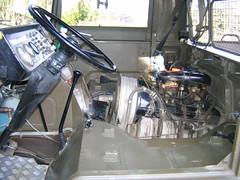Automatic transmissions have evolved well past the point of hatred. I'm still not entirely sold on CVTs from a "fun to drive" standpoint but a modern auto with paddle shifters is nothing to scoff at.
Hey, if it's good enough for the likes of Lamborghini and McLaren, that should say enough. r/cars and many automotive forums have had the "manual is manly" circlejerk going for quite a bit though. I can understand why car manufacturers are going over to CVTs, apparently affording better fuel mileage and all. I've heard they have horrible reliability problems once they get up there in miles though. I ran into a guy at a gas station who had a Scion iM and asked him about the CVT in it and he said he liked it.a modern auto with paddle shifters is nothing to scoff at
There's a lot of hype around stuff people don't understand. A manual transmission is easy to understand - it's like a clock that doesn't tell time. Automatic transmissions have never sat well with gearheads because they're computers that use hydraulic fluid rather than electrons (not that they'd understand electrons). This is a big ball of Boolean logic: Paddle shifters really became possible once the fluid logic was augmented/supplanted by electronic logic. There's nothing wrong with planetary gears. Torque converters aren't great but the same people who have no problems whatsoever with viscous couplings are hateful of torque converters without understanding they're exactly the same. CVTs got a bad rap early on because the fluid logic necessary to make them work tended to burn power. They also are harder to make robust enough to handle real power. But yes, the ideal internal combustion engined car has a motor that makes peak efficiency at a very narrow band coupled with a CVT that's perfectly efficient. They're not more popular because it's still easier to make a motor with a broad power band than a CVT with great efficiency and the ability to take a lot of torque. That's changing, though. By the time everything is electric the CVTs will probably kick ass. ;-)
I didn't know what Boolean Logic was, so I Googled it, came across this and now find myself even more confused. If that's how gearheads view automatic transmissions, no wonder they don't like them. That cutaway looks really, really familiar though. The general maziness of it. I swear to God, I think I have an old Haynes Manual for 1980s GM G-Bodies lying around somewhere that I got at a garage sale and somewhere in there is a schematic that looks very similar to that. When I Google Turbo 350 Transmission Schematic though, I'm not seeing anything like that cutaway. I asked the wife when we got this car, once the engine goes out if we could do an electric swap, she said yes. That's how you know you married right.By the time everything is electric the CVTs will probably kick ass. ;-)
It's the thing between Parts 6 and 18, captioned "valve body. That's not a cutaway. That's what you see when you take off the pan and the cover. It's the second google images link. The trick to electrics is where to put the batteries (and buying them). The motors are simple. You'll need to go back to a manual, though, because electrics function best with no transmission at all.
That's not a cutaway. That's what you see when you take off the pan and the cover. It's the second google images link. Fuck. Well, I'm an idiot. That's still cool as hell though. Now I gotta find that Haynes manual. As for an electric conversion on the FR-S? I figured it'd be a bit tricky to pull off due to the balance of the car. I know there are a handful of shops around the country that do them. I wonder if as electric cars become more common, more garages will pop up with people experienced enough to make a good custom job.It's the thing between Parts 6 and 18, captioned "valve body.
Fuck that, hang one on your wall! Your wife will love it. Electric conversions are trivial. I mean it. I've done four. None of them were my idea. One of them was a riding lawnmower for my boss and it took me a weekend. Not only that but weight distribution is the least of your problems. You're replacing this: http://image.superstreetonline.com/f/36072029w660h440q80re0+cr1/impp-1205-14-o%2Bscion-fr-s%2Bengine.jpg With this: And you're replacing this: ...okay, that was a mild exaggeration. But it's no exaggeration to say that the battery pack in the first Insight was literally 120 NiCD D-cells. You can put that shit anywhere. Wanna see the "stupid vehicle" I'll buy when I have the bandwidth? 4 wheel independent, three locking hydraulic differentials, geared hubs, hauls a platoon of troops. The downside? Aircooled slant 4 in a cabover. This limits its top speed to about 55mph. And because in order to make more room in the compartment for...well... anything, you need to move the people. Most people saw a coil off the springs in the back or replace the springs to make them ride better anyway. Far better to put in an electric motor (max rpm: ALL THE RPM) and a thousand pounds of batteries in back. You've just solved two problems. It'd probably have a range of about 20 miles when all's said and done, though... ;-) But hey. There are calculations for that. When I have more money.




I know nothing about automatic transmissions, but I'm pretty sure in this case, it's nothing to do with Boolean algebra - he's saying it's Boolean in the sense of 1/0, on/off, yes/no - i.e. in contrast to fuzzy logic. Boolean logic yields ON or OFF only, whereas fuzzy logic can supply a range of values, which might be interpreted as "cold", or "near".
I know nothing about cars, but pneumatic logic is a thing used in them, and is a model of Boolean algebra in the same way as switching circuits are. A friend of mine designs breaks for Freightliner and ends up implementing insane things like "decide the driver is in idiot and we really should/shouldn't be breaking now even though they haven't/have told us to" in pneumatic logic because microcontrollers are verboten.
Hot Rod Magazine had a great article back when Kenny Bernstein first broke 300 in the quarter mile back in '92. Because computer control was forbidden, and because his whip made around 4500 horsepower, they needed to come up with a complex set of hydraulic logic gates to control clutch slip to get the power to the road because it isn't really something humans can do. There's an impressive amount of corner-case physics in top fuel.Nitro methane burns yellow. The spectacular white flame seen above the stacks at night is raw burning hydrogen, dissociated from atmospheric water vapor by the searing exhaust gases.
Over a mile up the road, a Top Fuel dragster is staged & ready to launch down a quarter-mile strip as you pass by it. You have the advantage of a flying start. You run the ‘Vette hard up through the gears and blast across the starting line & pass the dragster at an honest 200 MPH. Just as you pass the Top Fuel Dragster the ‘tree’ goes green for both of you. The dragster launches & starts after you. You keep your foot down hard, but you hear an incredibly brutal whine that sears your eardrums & within 3 seconds the dragster catches & passes you. He beats you to the finish line, a quarter-mile away from where you just passed him. Think about it – from a standing start, the dragster had spotted you 200 MPH & not only caught, but nearly blasted you off the road when he passed you within a mere 1320 foot that's a cool perspectiveLets say the you are driving the average $140,000 Lingenfelter twin-turbo powered Corvette Z06.